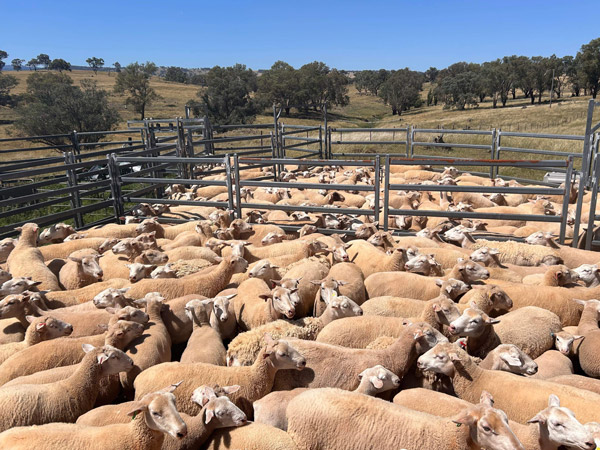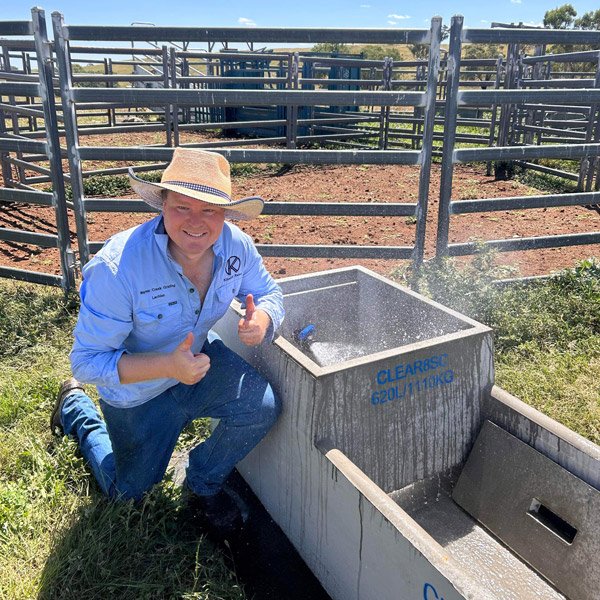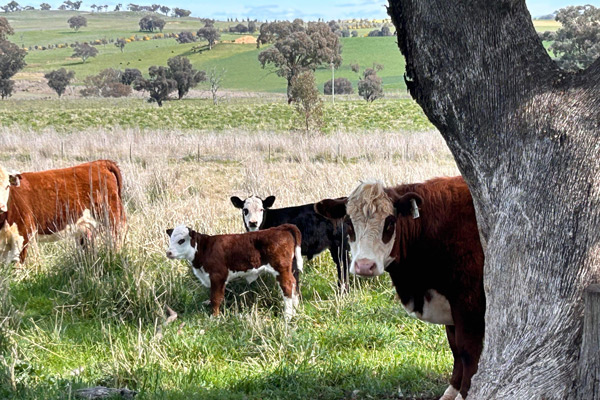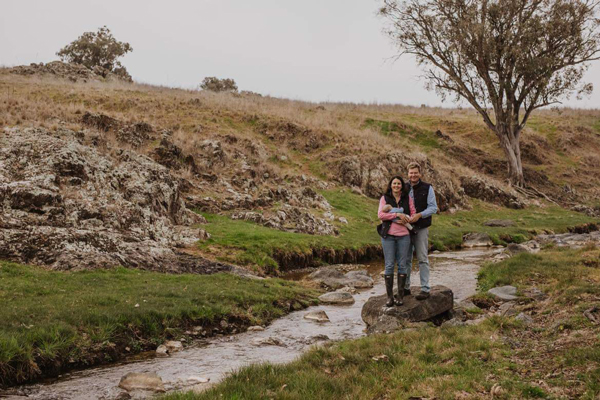Livestock graziers improve farm infrastructure and sustainability with RIC AgriStarter succession loan
21 May 2024
A RIC loan is making the succession journey easier for graziers Lachlan and Jacqueline Patterson to start up their own sheep and cattle farm and improve it for future generations.
Since his teens, Lachlan Patterson has held a passion for working in agriculture when his parents established Kinellar Rams White Suffolk and Poll Dorset stud near Canowindra in central western New South Wales.
Now the 32-year-old has taken on the stud to carry on his family’s long running history in agriculture.
“I just wanted to continue breeding good sheep and improving genetic gain,” Lachlan said.
With three sisters, some of whom were also interested in agriculture, he wanted to mitigate risks going into succession planning and build a separate farm beyond the family assets.
While Lachlan and his wife Jacqueline already agisted some land on his family’s farm, they decided to buy a 100-hectare property at nearby Cudal.
“It was three paddocks, had a dilapidated water system and a set of cattle yards,” he said describing the basic facilities of the property.

With no shearing shed on the farm, the couple started transitioning to a shedding sheep flock using UltraWhite genetics.
They also began breeding Poll Hereford cattle for grazing management of rank grasses.
The couple wanted to make improvements and promote sustainability throughout the land.
However, their commercial debt left them with little cash flow until they could build up their animal production capacity.
“The RIC loan just helped make that more affordable and achievable."
RIC loan eases rising interest pressure
Watching rising interest rates, the Pattersons decided it was time to apply for an Australian Government-funded low-interest RIC AgriStarter Loan.
They were able to meet key eligibility criteria including having 3 years of relevant on-farm or equivalent experience with the intention to have the farm business as their principal business pursuit.
They also showed they were undertaking succession planning arrangements and planned to earn at least 50 per cent of their income from the farm business within the loan term.
After being approved, they refinanced their existing commercial debt and used the improved cash flow from the lower interest payments to upgrade the farm.

They installed 15 livestock water troughs and a solar pump which draws from a creek but can also tap into municipal water supplies during dry periods.
“Having water infrastructure in place makes life so much easier,” Lachlan said.
“It’s going to be great for the future, it nearly drought-proofs us really.
“I think the RIC loan has been great for younger farmers especially ones that need to invest in infrastructure works.”

They found the loan terms, which included interest-only payments for the first five years with the ability to tailor a repayment schedule (monthly, quarterly or half yearly), worked for their business.
The RIC’s variable interest rate, that is set for six-month periods, along with the 10-year loan term gave them greater certainty of their financing.
“With the RIC, we know that we’ve got a longer-term period that we can actually plan for in our budgets,” he said.
Improving farmland for the future
Lachlan and Jacqueline have since welcomed a son into their family and look forward to raising him in an agricultural setting.
They plan to install fencing to divide the farm into smaller paddocks which will allow rotational grazing to improve pasture regrowth, soil health and animal productivity.
“Without healthy soils and healthy pastures basically there’ll be nothing left for future generations,” Lachlan said.
“It’s very important that we leave the land better for the next generation.”

